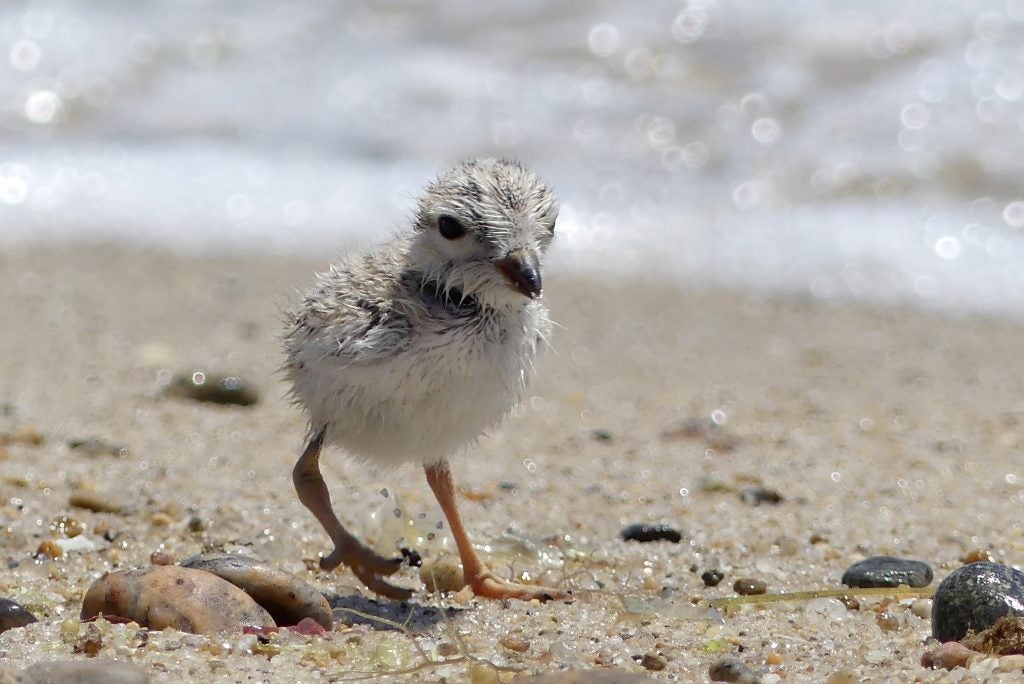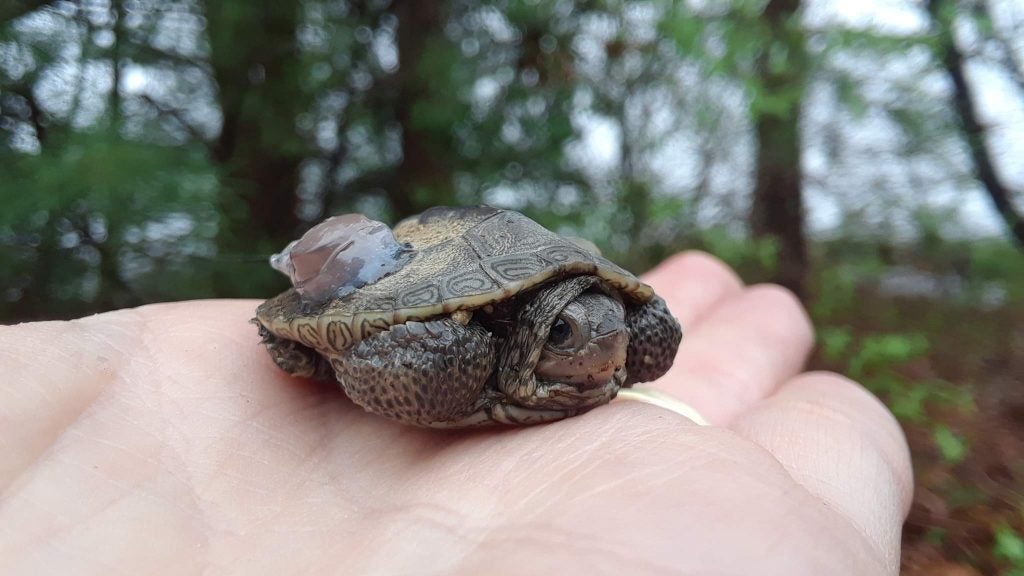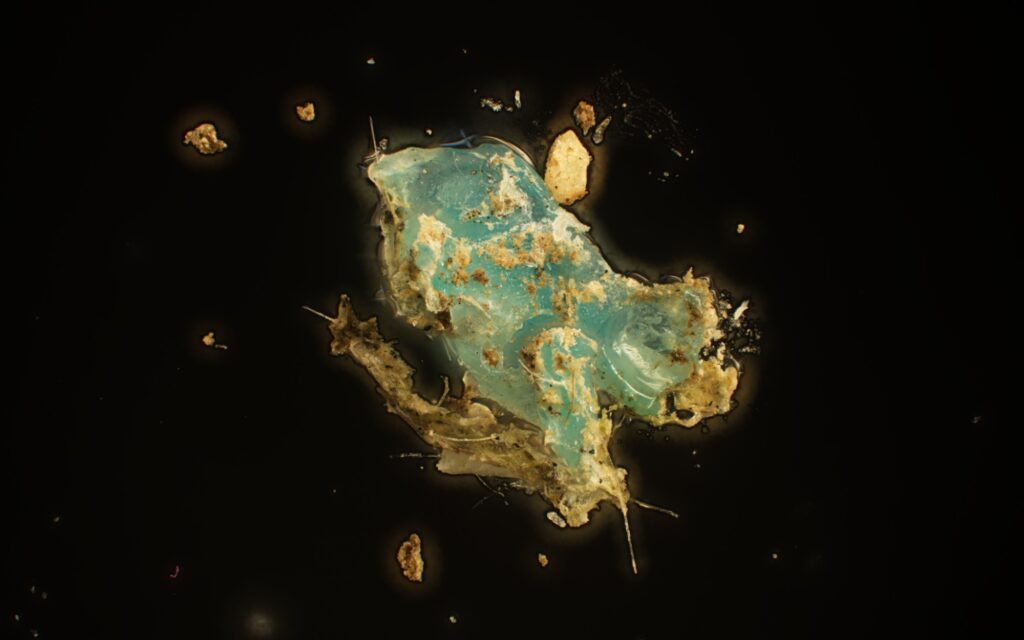1st Place | Photo Title: “Water Collection of a Honey Bee”
Casey Johnson, graduate student, plant sciences and
entomology

“In the heat of summer, honeybees can often be found
collecting water from puddles, gutters, and other
unsavory sources,” says Johnson, who is a graduate
student in Professor Steven Alm’s lab at the URI
Agricultural Experiment Station at East Farm in Kingston,
R.I. She continues, “We noticed that our honeybees
were drinking water from sphagnum moss in the pots of
pitcher plants, which led us to investigate the water
collecting behavior of honeybees on four local moss
species. Here, a water forager honeybee rests on one of
our observational moss setups, drinking water that she
will bring back to her hive.”
2nd Place | Photo Title: “Jam-Packed Micromussa”
Michael Corso ’24, aquaculture and fisheries
science major

“This Micromussa lordhowensis coral colony was
shot at Love the Reef, a marine animal distributor/
coral aquaculture facility in Wilmington, Mass.,
where I work,” says Corso, who aspires to preserve
tropical marine species. He continues, “In the wild,
this species is found in the South Pacific and along
Australia’s Great Barrier Reef. The bioluminescent
colors emanate from the coral’s symbiont algae,
zooxanthella. Rising ocean temperatures and
acidification can prevent the corals from holding
onto the algae they depend upon, resulting in coral
bleaching. Land-based sustainable aquaculture
efforts may be the last chance coral species like
these have at surviving in our future environment.”
3rd Place | Photo Title: “Piping Plover Chick”
Branden Costa, graduate student in environmental science and management,
focused on conservation biology

Costa observed this juvenile piping plover foraging after a rainstorm on Washburn Island
(Mass.(. “These birds,” says Costa, who studies migratory bird behavior and population
dynamics “are vulnerable to many threats before and after hatching, including predation,
desiccation, human disturbances, and storm surges. They begin foraging for themselves
mere hours after hatching and remain flightless for 25–30 days as they develop flight
feathers for end-of-season migration. This chick was the last surviving member of its
brood. The others were ‘taken’ by two off-leash domestic dogs. This chick demonstrates
the unwavering resilience piping plovers must exhibit to survive.”
Honorable Mention | Photo Title: “Last Nerve”
Michelle Gregoire, doctoral student in cell and molecular biology

Nerves relay sensory or motor information in the body and are made up of nerve cells,
or neurons,” says Gregoire. “In Professor Claudia Fallini’s lab, where I do my research,
we study cellular pathologies in amyotrophic lateral sclerosis and frontotemporal
dementia (ALS/FTD). We differentiate the neurons we study from induced pluripotent
stem cells (iPSC), derived from patient skin or blood cells. Using immunofluorescence
and our Leica DMi8 Widefield Fluorescence microscope, we visualized this stunning
motor neuron. During the differentiation process, not all the stem cells differentiated
into neurons, instead forming a mass of cells, visible here above the lone neuron.”
Honorable Mention | Photo Title: “Radiotagged Diamondback Terrapin Hatchling, Spring 2021“
Carolyn Decker, graduate student in natural resources science

“This nine-month-old, rare salt marsh turtle is about the size of a poker chip and
has just emerged from the secret sandy burrow where he spent his first winter,”
says Decker. “For my master’s thesis, I documented the movements and habitat
use of this species. This individual turtle helped us better understand the differing
needs of hatchling and adult terrapins. My observations helped us to make wildlife
management and conservation recommendations to protect the animals at all ages.
This photo shows the tiny radio transmitter that was glued to the terrapin’s shell so
researchers could track his movements.”
Honorable Mention | Photo Title: “Microplastic Particle from Narragansett Bay“
Sarah Davis, doctoral student in biological and environmental sciences

“This strangely beautiful image of a 1 mm microplastic particle was captured with an
Olympus BX63 automated light microscope,” says Davis, who works with Professors
Coleen Suckling and Andrew Davies on a Rhode Island Sea Grant project investigating
microplastic particles in Narragansett Bay. “For this project,” she says, “we trawl a
plankton net behind a URI vessel. The net collects material floating on and just below the
water’s surface; the material collected is processed and analyzed in the lab. By studying
the concentration and characteristics of microplastics in our local environment, we can
help inform decisions about mitigating pollution at the source.”
